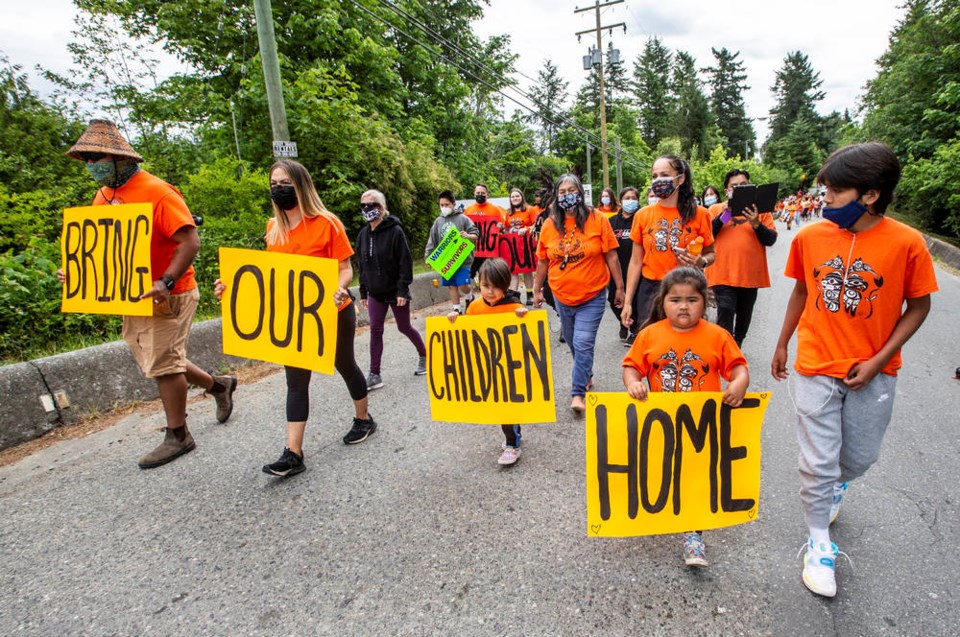The Tsawout First Nation continued a week of mourning and remembrance Friday with a procession from its band office to an overpass on the Patricia Bay Highway, where they hung signs in honour of the 215 children founded in unmarked graves on the grounds of a former residential school in Kamloops.
“This a painful time for our elders … for everybody,” said Christine Bird, education manager for the Tsawout Nation.
Elders joined mothers and fathers and youth of all ages dressed in orange shirts. They carried placards saying Every Child Matters, Bring Our Children Home and My Grandma Is a Survivor.
At the Tsawout Nation hall after the march, drums and song reverberated. Youth joined circles of elders to talk about the painful legacies of residential schools and the fresh wounds opened in the wake of the Kamloops discovery.
“Our elders are talking about what has happened over the last 100 years in these schools,” Bird said. “It is a pain that they carry.”
Bird said finding the remains of 215 children has left the Tsawout deeply disappointed with the federal government, and it serves as a wakeup call to Canadians about the horrors of residential schools.
“[Kamloops] was just one school … There are 147 more residential schools across the country,” she said.
“Canadians are starting to believe the violence that happened in these schools,” she said. “We’re feeling exhausted. There’s been a lot of commissions and task forces, but those are a distraction tool of government to cover up criminal activity and genocide. They say sickness and accidents, but we don’t bury them in unmarked graves unless you’re trying to cover it up.”
Bird said her father-in-law attended a resdiential school in Brandon, taken there when he was four. “He used to sit at a window at night and watch children being taken out to be buried.”
The Tsawout are encouraged First Nation groups are taking the initiative to purchase scanning equipment to search the grounds of five resdiential schools on Vancouver Island “to begin the process of bringing our children home,” she said.
The GoFundMe fundraising campaign organized by Steve Sxwithul’txw, a survivor of the Kuper Island Residential School, and Michele Mundy had raised $108,000 as of Friday afternoon — well above its original goal of $25,000 to purchase a ground-penetrating radar unit.
The Tsawout is one of five bands that make up the Saanich Nation, which includes the Tsartlip, Tseycum, Malahat and Pauquachin.



